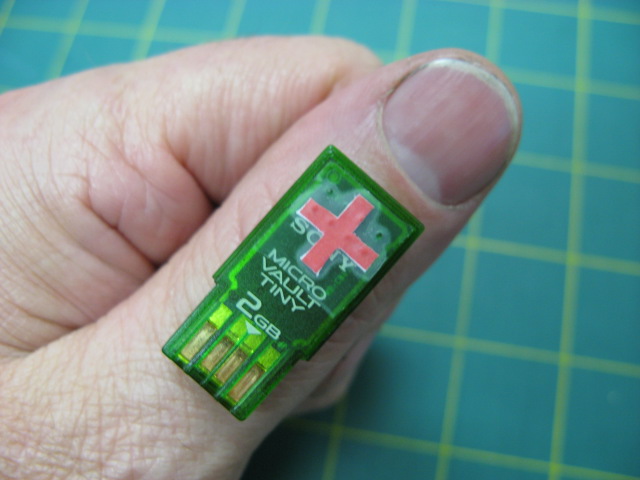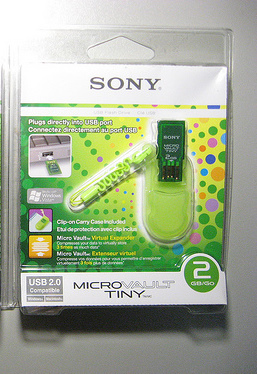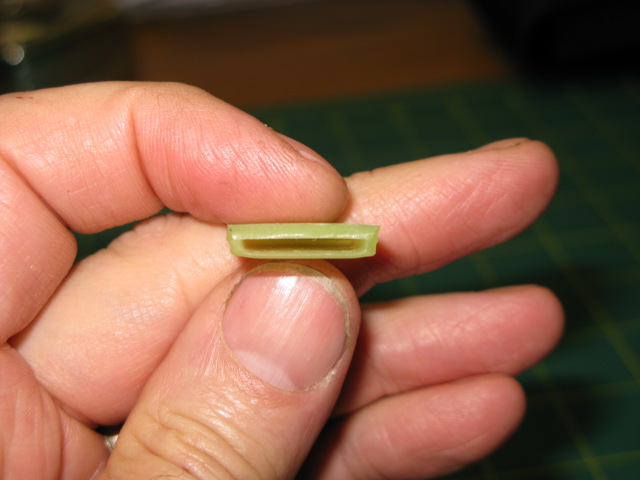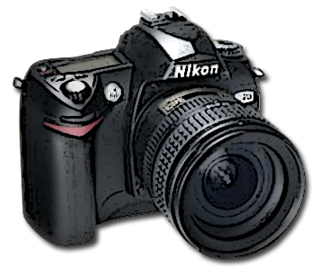How to - Emergency Records on USB Thumb Drive
by thetoolman in Circuits > USB
79153 Views, 272 Favorites, 0 Comments
How to - Emergency Records on USB Thumb Drive

Update!! Checkout version 2.0 here:
I don't know about you but I like to be prepared. I don't always do a good job at actually preparing, but I think about it a lot. Let's look at an instructable for an emergency USB thumb drive. This instructable is about what's on the drive, not how crazy it looks,
WHAT-
This instructable should give you all the knowledge you need to prepare an emergency USB thumb drive that you can keep in your wallet at all times. It will be there for you when you need it and believe me, you will need it. You'll pat yourself on the back the first time you remember it there. It is there, isn't it?
WHY-
Why do this? We'll we live in an uncertain world. All you have to do is turn on the tube and watch the news to know that the world is going to hell, fast! Speaking from a personal perspective, I can't change world events single handed, but I can cover my own butt and maybe make the task of providing information to someone or some entity easier on me. Remember trying to pull info together for an application or form to fill out? A little stressful right? What if you house burned down, got copies of all your records?
I also considered putting all this information up in the cloud (the internet) but I'm not yet comfortable with the security aspect and one other important thing, you need a broadband connection, not available everywhere yet.
WHO-
You, or someone able to use a computer, digital camera, scanner, the internet, you get the picture. Here's a thought- provide this service for your elderly parents or someone who isn't digitally gifted. It will make you feel real good.
WHERE-
Right on your computer. It could be Windows, Mac or even from the internet. More and more online services are popping up all the time to perform tasks independent of you desktop. A word of caution though, this instructable is written to favor Windows and many of the portable applications here are Windows only. Sorry my Mac pals.
HOW-
That's what I'm about to share with you. The instructable is broken down into major sections like:
1. Why Choose This Drive
2. Altering the Case
3. Important Contacts
4. Health Records
5. Important Documents
6. Family Photos
7. Home Inventory
8. Music & Video
9. Online Logins & Passwords
10. Vehicle Info
11. Portable Applications
12. Protection & Encryption
Disclaimer: These instructions are meant to be a guide to you in preparing one of these emergency thumb drives of you own. I am passing this knowledge on to you because it has worked for me. I am not liable for any damages or loss of data you may incur due to following or not following these instructions.
Please use common sense and ALWAYS BACK UP YOUR DATA!
Sony Micro Vault Thumb Drive - My Choice


Well simply put, it's
1. The smallest practical drive I can fit in my wallet.
2. Most modern computers have USB drives. All platforms.
3, You can put in your wallet and you can't feel a bulge.
4. It's available in a variety of colors and capacities. I thought that the 2gb would be enough.
5. I don't have any brand loyalty to Sony, but they do make pretty good stuff.
Here's some alternatives that won't fit in your wallet but that are indestructible:
Corsair Survivor
Iron Drive
Trim the Case




I also added a red cross, the universal symbol for first aid or emergency so when they scrape me off of the asphalt and go through my stuff, they should find the thumb drive and know there's important info on it.
Provided it still works. I'm still thinking this part through on how to make it indestructible.
By the way, it's not waterproof but there is a video, I thinks it's on YouTube that shows you how to make your USB drive waterproof.
What's Inside?

Let's talk a bit about what's inside, the contents and the structure. This thumb drive contains all your important digital files including but not limited to the following:
1. Important contacts
2. Health Records
3. Important Documents
4. Family & friend's photos
5. Photos and info of your home and possessions
6. Favorite music and videos
7. Online bookmarks & passwords
8. Photos and info about your vehicles
9. Portable applications you can run right from this drive
10. Ways to secure this drive and it's contents
Now I don't know how much stuff you have and I only chose the 2gb flavor of this drive so your choices may vary. It's better to have more than not enough.
TIP: Compile all this stuff in a folder on your desktop. Right click on it to see how much space it takes up and buy the appropriate size drive.
HOW TO READ THEM-
In order to view the files contained on your drive, you need an application either on the host computer where you insert the drive or on the drive itself. Since it's suppose to be self contained, I'll recommend applications to run from this drive. More about those later.
HOW THEY ARE ORGANIZED-
I like to take a simple approach to this and file them in folders as listed above but you can do it anyway you like.
TIP- In an emergency, health care providers need to know where your vital records are so make a "Read Me First" text file and put it in the root directory so they can find it easily. You may want to wear a wrist bracelet or neck pendent to tell others where to find the thumb drive.
Important Contacts

WHAT TO INCLUDE-
You should rank them in order of importance like this:
1. Family
2. Friends
3. Work
4. Insurance
5. Financial
6. Other
For each contact you should have phone, address, email, alternate phone, as much info as you need to get in contact with them in an emergency.
HOW TO PREPARE THEM-
There are several ways to go here:
1. Export your Contact Manager's contacts to an MS Office Excel file or Adobe PDF file.
2. Scan your address or phone book to Adobe PDF file.
3. Make a digital recording of important names and numbers.
I'll talk about ways to view and hear these types of files in the Portable Applications section later.
Health Records

WHAT TO INCLUDE-
Medical records should include copies of the following:
Complete Medical History Including:
Operations
Allergies
Vaccinations
Diseases
Any special needs
Medication Prescriptions
Eye Wear Prescriptions
Hearing or Walking Aids
Dental Records
List of doctors (should be in important contacts)
Health Insurance Cards & Policies
Primary Health Insurance
Supplemental Medical Insurance
Medicare Card
Long-term Care Insurance
Disability Insurance
Life Insurance (Agent, Beneficiaries)
Funeral Insurance Policy
Durable Power Of Attorney
Wills and Living Wills
Health Care Proxies
*NOTE: you should include any current or past records that you feel are important.
HOW TO PREPARE THEM-
1.As mentioned before, scan all paper documents into the PDF format. Color if possible.
2. Try and get digital copies from your health care providers.
3. Go online to record and store your documents. I'm breaking with what I said earlier and making an exception on medical records. I found a site called iHealthRecords.com that let's me fill out an extensive medical background which I can print to paper or PDF, all for free. They even offer a service to partner with your doctor to gain access to the records.
iHealthRecord
Important Documents

WHAT TO INCLUDE-
PERSONAL IDENTIFICATION RELATED-
Driver's License
Passport
Birth Certificate
Social Security Card
Citizenship Papers
Marriage/Divorce Records
Military ID or Discharge Records
Diplomas
Other documents that show who you are
FINANCIAL RELATED-
Credit Cards
Debit Cards
Safety Deposit Box Numbers and Photos of Keys
Current Checking and Savings Account Statements
Check Register or Savings Books
Brokerage Account Statements
Stocks and Bonds
RETIREMENT RELATED-
401k Plans
Profit Sharing/Pension Plans
IRA Accounts
Military Benefits/Records
Social Security Records
INCOME RELATED-
Payroll Stubs
W-2 Form
1099 Form
Other Work Related Documents
TAXES RELATED-
Annual Income Tax Records for Several Years
Property Tax Records
OTHER LEGAL DOCUMENTS-
Contracts
Partnership Agreements
Deed to House or Property
Mortgage (or Rental Lease)
Homeowner's Insurance
Automobile Title
Automobile Insurance
HOW TO PREPARE THEM-
1.As mentioned before, scan all paper documents into the PDF format. Color if possible.
2. If you don't have copies, try and get them from the original source including government, civil or private companies.
Family Photos


Current and Past Photos of Yourself
Current and Past Photos of You Family
Current and Past Photos of You With Your Family
Photos of Group Events Like Parties, Weddings, etc.
Current and Past Photos of Your Pets
Actually this is wide open, make yourself happy.
HOW TO PREPARE THEM-
Since scans of photos and digital photos can take up a lot of disk space, use a resizing program to re sample them to about a post card size, say 4" x 6". For practical purposes, you don't really need anything bigger.
Here are several free applications to consider to download:
Faststone Photo Resizer
IrfanView
PhotoDrop (Mac Only)
You can even do this chore online, here are a few:
PicNik
Pixinate
Pixer
Home Inventory

WHAT TO INCLUDE-
Simply take photos of all you possessions, property and valuables. Make lists and add information about where you bought it, how long you've had it, what you paid for it and what it's worth. Scanning all you receipts would be good too.
You can even take short videos of each room in your house, your collection of fancy plates or anything else you wish. Speak clearly and get in close for good detail.
Detail is key here. The more detailed, the less the insurance companies will dispute it's worth.
HOW TO PREPARE IT-
1. Digital is king here. Use a digital camera and a digital camcorder that records small AVI or Quicktime videos.
2. Scan any receipts or records.
3. Use a spreadsheet program to make your lists and print to PDF OR
4. Use an inventory program speciall designed for this purpose, like "Home Inventory". here's the link.
Home Inventory
You can store it digitally or upload it to their secure servers.
Music & Videos

WHAT TO INCLUDE-
Some of you favorite song.
Videos of you child's first steps.
It's up to you.
HOW TO PREPARE THEM-
1. MP3 for music as it's compressed.
2. MPEG-4 or other compressed formats
3. Play them using one of the portable applications discussed in a later section.
Online Bookmarks & Passwords

WHAT TO INCLUDE-
Your bookmarks of important sites.
Your online passwords (priceless).
HOW TO PREPARE THEM-
1. On Windows-copy you "Favorites Folder" in you "My Documents Folder" on your root or "C" drive. They don't take up too much room and can save you a lot of time trying to find those sites again. You can run them right from this thumb drive by double clicking them in the file manager. It's just a shortcut.
On the Mac-
2. Passwords are a different matter. If you're like me, you've got hundreds of unique passwords and need to manage them or you'll forget them. Popular password managers are available to help with this. One of my favorites is KeePass. It's dual platform and free, my favorite price. Here's some liks to several:
KeePass (All Platforms Free)
Sxipper (All Platforms Free)
Roboform (Windows Only, Fee, Sorry)
3. There is a growing movement to utilize online password management but, I'm not on that band wagon yet.
Vehicle Info

WHAT TO INCLUDE-
Photos and videos of the exterior, interior, engine compartment, trunk, serial numbers, etc.
Bill of Sale
Title
Registration
Service Records (very Important)
Mileage Logs
Insurance Records
HOW TO PREPARE THEM-
As before, digitize everything.
Scan all paper doc.
Get missing documents from original sources i.e. Dealer, DMV, Insurance
Portable Applications - Office Suite & Repair Apps

WHAT TO INCLUDE-
Since I build and repair computers as a hobby, I need to 2 different groups of software on this drive:
1. One group to run as a portable office and graphics suite from the thumb drive.
2. And a second group to maintain and repair a computer from the thumb drive.
We'll take each in turn. Your needs may vary so you may want to mix them up. It helps me to keep them separated.
OFFICE & GRAPHICS SUITE
It helps to have a program launcher that runs from the thumb drive so you don't have to keep navigating the file manager every time you want to launch an app.
Like other instructables, I'm recommending the PortableApps.org site with really good programs for most of your portable office needs.
Here's a great instructable by m-arjin that does a great job explaining the details of how to install this suite of tools.
How To Install Cool Apps ON Your Thumb Drive
The PortableApps.org site also has detailed instructions as well.
PC REPAIR SUITE
I've assembled a list of free and open source tools for system analysis, file recovery, system maintenance and anti-virus/anti-spyware.
Protection/Encryption

-Protect the drive (drive encryption with password access)
-Protect the folder (folder encryption with password access)
-Protect the file (file encryption with password access)
You may want to do any or all of these. In an emergency, especially a health related one, you want medical personnel to get your health info easily without any delay.
For this reason I'm putting health at the top of the list and prioritizing all the content as follows with the level of access assigned:
1. Health records (limited access)
2. Important Contact (limited access)
3. Important Documents (owner access only)
4. Home Inventory (owner access only)
5. Vehicle Info (owner access only)
6. Family Photos (open access)
7. Music & Videos (open access)
For this project I'm recommending TruCrypt. It's widely used and easily available.
Well that's it for now. I think I've covered everything. Now before some of you tell me that I should have used this software or that software, These are my recommendations and yours will probably be a little different.
The point of this instructable is to give you a good overview of what type of info you want to keep on your thumb drive and how to go about it.
Good luck and I'd like to hear from some of you in a positive way.
Happy trails.
UPDATE:
Many of you have commented with some good suggestions on ways to improve this instructable.
A word on emergency heath records and encryption. I pdf my critical (life threatening allergies) health info and put it in the root of the drive with a title "EMT Read 1st". Everything else is encrypted with TrueCrypt as a hidden volume. You can't see it, and only I know the password. I feel this is pretty strong. I purposely made the password very difficult to replicate.
Keep those comments coming.
Update!!
I've updated this instructable with version 2.0.
Here' the link:
https://www.instructables.com/id/EMERGENCY-RECORDS-ON-a-THUMB-DRIVE-VERSION-20/